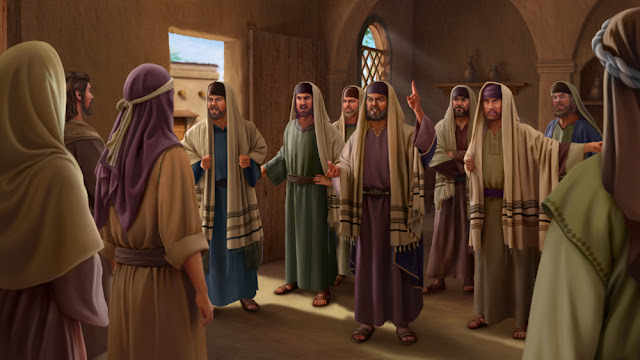II. On the Truth of God’s Name
3. During the Age of Law, the work of guiding mankind was done under the name of Jehovah, and the first stage of work was initiated on earth. At this stage, the work consisted of building the temple and the altar, and using the law to guide the people of Israel and to work in their midst. By guiding the people of Israel, He launched a base for His work on earth. From this base, He expanded His work beyond Israel, which is to say that, starting from Israel, He extended His work outward, so that later generations gradually came to know that Jehovah was God, and that it was Jehovah who created the heavens and earth and all things, and that it was Jehovah who made all creatures. He spread His work through the people of Israel outward beyond them. The land of Israel was the first holy place of Jehovah’s work on earth, and it was in the land of Israel that God first went to work on earth. That was the work of the Age of Law.
4. During the Age of Grace, the name of God was Jesus, that is to say, God was a God who saved man, and He was a compassionate and loving God. God was with man. His love, His compassion, and His salvation accompanied each and every person. Only by accepting the name of Jesus and His presence was man able to gain peace and joy, to receive His blessing, His vast and numerous graces, and His salvation. Through the crucifixion of Jesus, all those who followed Him received salvation and were forgiven their sins.
from “The Vision of God’s Work (3)” in The Word Appears in the Flesh
5. The Age of Grace began with Jesus’ name. When Jesus began to perform His ministry, the Holy Spirit began to testify to the name of Jesus, and the name of Jehovah was no longer spoken of; instead, the Holy Spirit undertook the new work principally under the name of Jesus. The testimony of those who believed in Him was borne for Jesus Christ, and the work they did was also for Jesus Christ. The conclusion of the Old Testament Age of Law meant that the work principally conducted under the name of Jehovah had come to an end. Henceforth, the name of God was no longer Jehovah; instead He was called Jesus, and from here on the Holy Spirit began the work principally under the name of Jesus.
from “The Vision of God’s Work (3)” in The Word Appears in the Flesh
6. The work that Jesus did represented the name of Jesus, and it represented the Age of Grace; as for the work done by Jehovah, it represented Jehovah, and it represented the Age of Law. Their work was the work of one Spirit in two different ages. … Although They were called by two different names, it was the same Spirit that accomplished both stages of work, and the work that was done was continuous. As the name was different, and the content of the work was different, the age was different. When Jehovah came, that was the age of Jehovah, and when Jesus came, that was the age of Jesus. And so, with each coming, God is called by one name, He represents one age, and He opens up a new path; and on each new path, He assumes a new name, which shows that God is always new and never old, and that His work never ceases to progress in a forward direction. History is always moving forward, and the work of God is always moving forward. For His six-thousand-year management plan to reach its end, it must keep progressing in a forward direction. Each day He must do new work, each year He must do new work; He must open up new paths, must launch new eras, begin new and greater work, and along with these, bring new names and new work.
7. In each age, God does new work and is called by a new name; how could He do the same work in different ages? How could He cling to the old? The name of Jesus was taken for the sake of the work of redemption, so would He still be called by the same name when He returns in the last days? Would He still be doing the work of redemption? Why is it that Jehovah and Jesus are one, yet They are called by different names in different ages? Is it not because the ages of Their work are different? Could a single name represent God in His entirety? This being so, God must be called by a different name in a different age, and must use the name to change the age and to represent the age. For no one name can fully represent God Himself, and each name is able only to represent the temporal aspect of God’s disposition in a given age; all it needs to do is to represent His work. Therefore, God can choose whatever name befits His disposition to represent the entire age. Regardless of whether it is the age of Jehovah, or the age of Jesus, each age is represented by a name. At the end of the Age of Grace, the final age has arrived, and Jesus has already come. How could He still be called Jesus? How could He still assume the form of Jesus among men? Have you forgotten that Jesus was no more than the image of a Nazarene? Have you forgotten that Jesus was only the Redeemer of mankind? How could He take on the work of conquering and perfecting man in the last days?
from “The Vision of God’s Work (3)” in The Word Appears in the Flesh




No comments:
Post a Comment